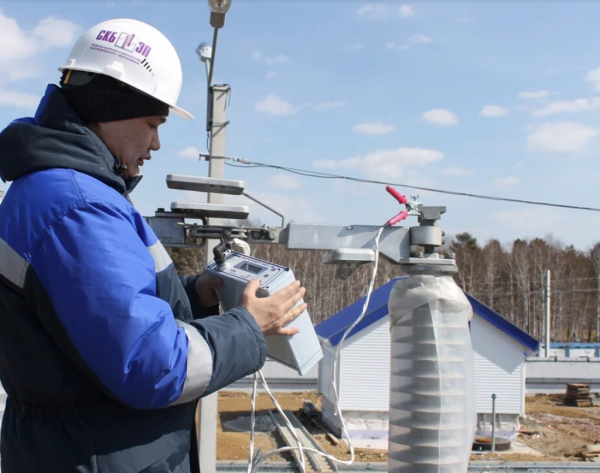Monitoring of the SF6 circuit breakers by using the MIKO-1 microohmmeter
The scope of tests of SF6 circuit breakers (including in conjunction with the draw-out component of the switchgear and control gear) during major repairs and inter-repair tests includes the following:
- checking the minimum actuation voltage of the control electromagnets;
- checking the status of the circuit breaker contacts (measuring the resistance of the main circuit);
- checking the time (if necessary, and speed) characteristics of circuit breakers.
Checking the state of the circuit breaker contacts using MIKO-1
The state of the contacts is determined by measuring the DC resistance of the circuit breaker poles, the contacts are not visually inspected – it is forbidden to disassemble SF6 circuit breakers. The DC resistance of each pole of a circuit breaker should not be more than the rating in the technical documentation for the corresponding equipment.
Circuit breakers have built-in current transformers in their design. Therefore, measuring the contact resistance of such breakers was a problem until recently. Not every instrument for measuring resistances (portable microohmmeter) is suitable for this task. After all, the measuring current of the microohmmeter must flow through the circuit stably and for a sufficient time, and the microohmmeter itself must work steadily under powerful electromagnetic fields.
In accordance with the requirements of GOST 12997-84, MIKO-1 is protected from electromagnetic fields with a strength of up to 400 A/m by means of shielding and microcircuit. Because of this, the readings remain stable even in a 500 kV substation.
The built-in battery provides autonomy and portability of the microohmmeter. The battery capacity is sufficient to perform at least 100 measurements. The battery is charged from an internal charger powered by a DC or AC mains.
The small weight of the MIKO-1 (3.6 kg) and a special case make it convenient to carry the instrument and to climb with it to any circuit breaker. The operating current through the measured resistance is 50A when the resistance value is up to 2,000 μΩ and is equal to 5A when the resistance value is in the range of 2,000÷20,000 μΩ. A stable generator that sets the operating current eliminates the measurement error caused by the inductance of the resistance being measured.
Unlike analogues in the same price category, MIKO-1 stabilizes the current during measurement, which minimizes additional error, has small dimensions and low weight, its cables are convenient for use and connection to the object to be measured, it has autonomous power supply, it is resistant to electromagnetic fields, and reliable.
MIKO-1 is easy to operate and maintain. User participation in the measurement process is minimal.

 Русский
Русский
 Français
Français
 Chinese
Chinese
